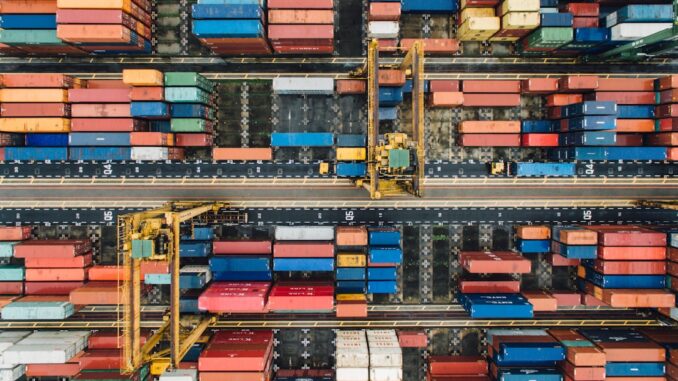
Summary
The US implemented reciprocal tariffs on dozens of countries, causing global concern and calls for negotiations. These tariffs aim to address trade imbalances and protect American industries, but have been met with criticism and fears of trade wars. The situation underscores the complexities of international trade and the need for balanced agreements.
Built for businesses of all sizesTrueNAS grows as you do.
** Main Story**
US “Reciprocal” Tariffs Draw Dismay, Calls for Negotiations
The United States recently implemented “reciprocal” tariffs on goods from dozens of countries, a move that has sent ripples of concern throughout the global economy and sparked calls for renewed trade negotiations. These tariffs, enacted under the authority of the International Emergency Economic Powers Act, aim to address what the US administration perceives as unfair trade practices and chronic trade deficits. The move has been met with a mixture of apprehension, dismay, and calls for dialogue from affected nations.
Understanding the Reciprocal Tariffs
These reciprocal tariffs involve a two-tiered approach. Initially, a 10% baseline tariff applies to all imported goods, effective April 5, 2025. Subsequently, higher, individualized tariffs target specific countries with which the US has significant trade deficits. These targeted tariffs, ranging from 11% to 50%, commenced on April 9, 2025. The administration argues this approach seeks to level the playing field, contending that US tariffs are significantly lower than those imposed by many trading partners on American goods.
Rationale Behind the Tariffs
The White House justifies these tariffs as a measure to rebalance trade relationships, bolster domestic manufacturing, and safeguard national economic security. The administration points to persistent trade deficits, loss of manufacturing jobs, and vulnerabilities in critical supply chains as reasons for action. The administration’s statement points to the unfair discrepancy between US tariffs and other countries’ tariffs on particular products, like cars, computer networking equipment and agricultural products.
The US administration also asserts that reciprocal tariffs serve as leverage to encourage other nations to lower their trade barriers, effectively aligning with the United States on economic and national security interests. By creating a situation where trading partners have to absorb the tariffs or negotiate concessions, the United States aims to secure more favorable terms of trade.
International Response and Concerns
The international community has expressed serious concerns about the potential ramifications of these reciprocal tariffs. Many fear a retaliatory escalation, reminiscent of previous trade wars, which could disrupt global supply chains, increase consumer prices, and hinder economic growth. There are apprehensions that these protectionist measures could undermine the multilateral trading system and create a more volatile and unpredictable trade environment.
Negotiation as a Path Forward
Amidst the growing tension, many countries have emphasized the importance of negotiation and diplomacy as the most effective way to resolve trade disputes. They argue that collaborative discussions, focused on mutual interests and concessions, offer a better path to achieving sustainable and mutually beneficial trade relationships. Some nations have also raised concerns about the legality of the tariffs under World Trade Organization rules and are considering filing formal complaints.
Conclusion: Balancing Protectionism and Cooperation
The implementation of reciprocal tariffs underscores the inherent tension between protectionism and international cooperation in global trade. While the US administration seeks to address legitimate concerns about trade imbalances and protect domestic industries, the chosen approach carries significant risks.
Negotiation, a cornerstone of international diplomacy and trade, presents a viable alternative to escalating trade tensions. It involves a strategic give-and-take, requiring parties to understand each other’s perspectives and find common ground for agreement. By engaging in constructive dialogue, nations can work towards establishing balanced trade relationships that foster economic growth and stability for all. As the situation evolves, the focus should shift towards collaborative discussions and a commitment to upholding the principles of fair and predictable global trade.


Given the focus on addressing trade imbalances, what mechanisms are in place to accurately measure the true cost, including externalities, of goods and services across different nations, ensuring a truly level playing field for reciprocal tariffs?
That’s a really insightful question! The measurement of ‘true cost’ is definitely a complex area. While organizations like the WTO collect data on tariffs and trade volumes, incorporating externalities like environmental impact or labor conditions into a standardized cost calculation is a huge challenge. Perhaps more transparency in supply chains could be a step forward?
Editor: StorageTech.News
Thank you to our Sponsor Esdebe
So, 10% across the board, huh? Does that mean my morning coffee is now officially part of a high-stakes geopolitical chess match? Asking for my caffeine levels.
That’s a great way to look at it! It really highlights how global trade policies can impact even our daily routines. Perhaps it’s time we all start tracking the origin of our coffee beans more closely. It may make an interesting comparison to the tariffs! What do you think?
Editor: StorageTech.News
Thank you to our Sponsor Esdebe
So, a 10% baseline tariff for everyone, huh? Does this mean we’re all getting participation trophies in the global trade game? I wonder which country will get the “Most Improved” award for lowering their trade barriers?
That’s a fun analogy! The “Most Improved” award would be interesting, and perhaps highlight the positive impact of negotiation. It could serve as an incentive for countries to proactively address trade imbalances and work towards more equitable agreements. What metrics should be used for judging “Most Improved”?
Editor: StorageTech.News
Thank you to our Sponsor Esdebe
10% for everyone to start? Sounds like a participation fee for the global marketplace. So, when do the real games begin, and what happens when someone *really* breaks the trade barrier rules? Asking for a friend… who may or may not be a multinational corporation.